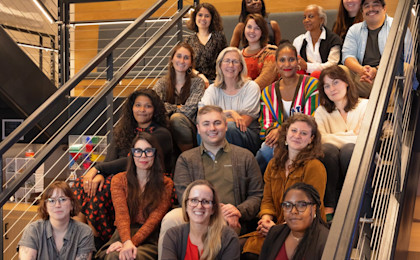Making Zombies Squelch in Portuguese, or the Art of Innovative Sound Design

Audible Studios engineer Joe Dell’Aquilla was having zombie trouble. He was remixing a Brazilian Audible Original, Juízo Final (Judgment Day), in Dolby Atmos, which allowed him to place sounds virtually anywhere in a 360-degree space around the listener, and there was a funny scene involving a family reunion with some undead attendees. Dell’Aquilla was working with a “flesh squelching” sound that happened whenever a zombie spoke, but the dialogue was in Portuguese, so he wasn’t always sure who was speaking. Translated scripts helped, but “having someone there that understands the language” was crucial, says Dell’Aquilla, “to confirm that any edits or mixing techniques were correct.” That’s where Fernando Schaer came in.
As a production manager for Audible’s service for Brazil, Schaer wanted to offer the title to Brazilian customers in Dolby Atmos. Audible’s content team had commissioned Judgment Day from popular Brazilian comedy collective Porta Dos Fundos, and Schaer felt that “the story’s world-building and variety of settings made it perfect” for Atmos, but Atmos was “still an emerging technology for us in Brazil.” Tim Warner, who heads up international production for Audible Studios, saw an opportunity to connect Schaer to Audible Studios in Newark, NJ, where he could advise on the Portuguese-language script for Dell’Aquilla while simultaneously learning Atmos spatializing. “When Porta Dos Fundos heard the final audio, they were blown away by how much their story was enhanced by Atmos,” says Warner.
This is just one way Audible teams collaborate to create the best possible listening experiences for audiences across countries and regions so that regardless of what language it’s in, listeners have a consistent experience. Chris Jones, senior director of production for Audible Studios’ UK and European titles, explains that, “The originating creative team does the sound design and mixing, and local nuance is provided by the teams who are recording each territory’s performances. This ensures our customers have an experience that is authentic and resonates with them.” Whenever an Audible Original is intended to be released internationally, a kick-off meeting at the start ensures all the local casting and production teams and directors are fully briefed on the approach in order to maintain the original creative vision.
This approach has led to the critical and commercial success of titles like George Orwell’s 1984, which was produced by Jones’s team in the UK. Listeners are effectively transported to a dystopian London via a rich, three-dimensional soundscape of crowd noises, distant sirens, crisply delivered telescreen announcements, and echoing footsteps. It’s a consistently cold and concrete experience regardless of whether the main character Winston Smith is voiced by Andrew Garfield in English, Jannik Schümann in German, or Lázaro Ramos in Portuguese.
“We can localize just about anything,” says Warner. But it still can offer some interesting challenges for the sound design teams. Take, for example, the different cadences of languages, and how to line up dialogue with background noises. “The Spanish that’s spoken in the US and Latin America is about twenty-five percent longer than spoken English,” explains Warner. This difference in speed is true for many languages, requiring adjustments. For instance, production teams may need to add more space between the sound of a shop door opening and the footsteps leading down the hall in order to accommodate a brief conversation in between.
We even localize titles in different dialects of the same language, like Room 27, an audio-first Audible Original simultaneously released in both Latin American Spanish and Castilian Spanish. Mariel Lopez-Mota, an associate director on our content team, says, “We saw the potential for Ariana Godoy’s work to resonate with Spanish-speaking listeners in the US, but also more globally.” So one production team created an immersive sound design for a Castilian Spanish performance, while another production team adjusted the design for the version in Latin American Spanish, which has its own idioms and nuances.
Depending on the project, localizing can also require altering everyday sounds. “Car horns, phones, ambulances, those sounds vary from place to place,” says Warner. “Or maybe there’s a radio playing in the background or someone speaking on TV—these need to be in the local language, as well.”
Sometimes that means working with our local creative communities to re-record sounds, as was the case with the Spanish-language version of The Sesame Street Podcast with Foley and Friends. When the team received the original sound design, the music had backing vocals sung in English, which wouldn’t work with lead tracks sung in Spanish. So the team hired musicians to re-record the songs, note for note, with new backing vocals. “It’s a great example of how Audible invests in local creatives to adapt content for audiences worldwide,” Warner says.
Whether an Audible Original is intended as a global release, or it’s released in one marketplace and adapted for another one, we have built a framework for localizing fairly quickly with a universal, premium-quality sound design. Warner credits that to “all the work that our teams around the world have put in. We’re really one big team.” Jones agrees: “There’s a feeling from the start that we’re all in it together. We’re encouraged to share challenges so we can help each other solve them.” That definitely makes dealing with squelching zombies much easier.


